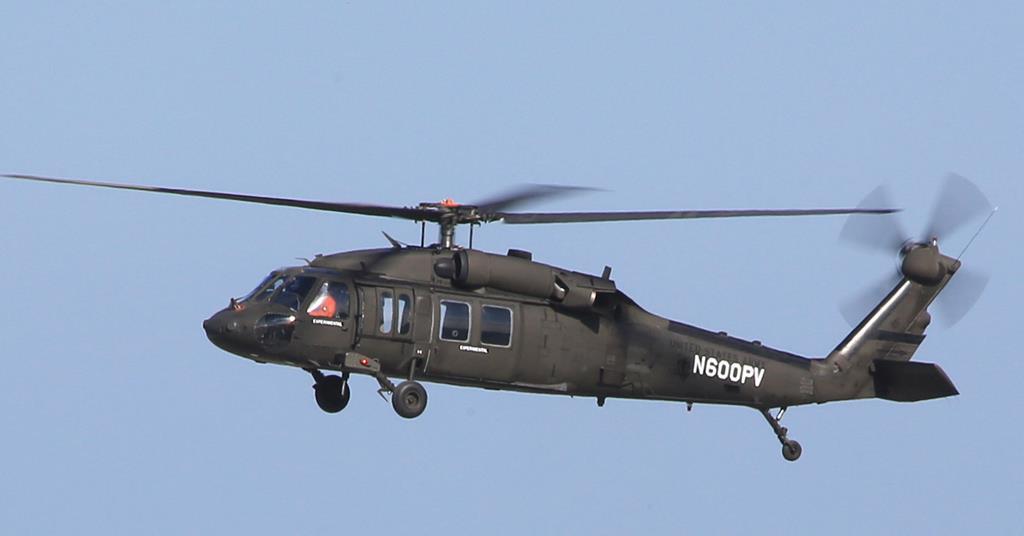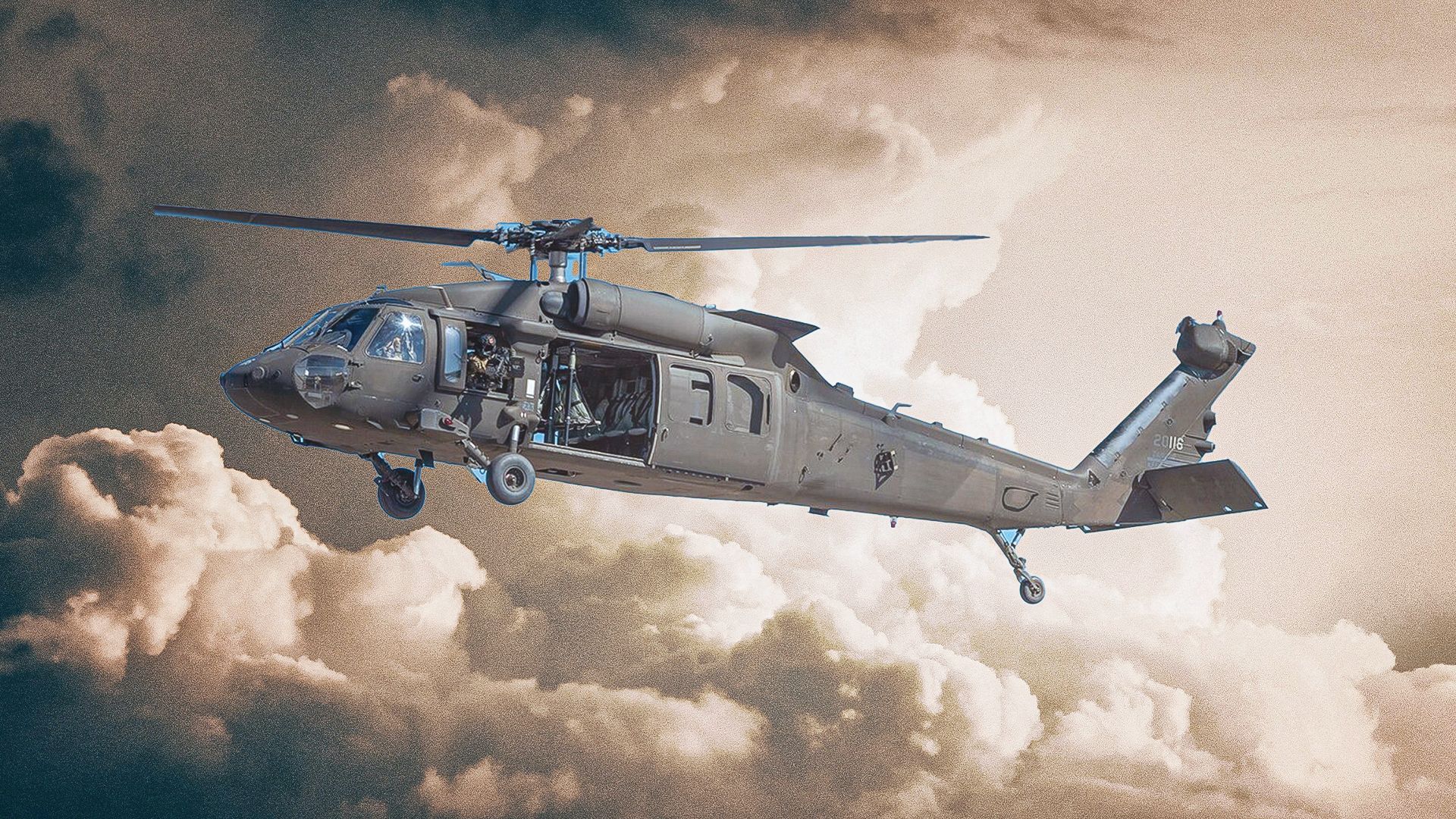The UH 60: A Versatile Airplane for Armed Force and Civilian Use
The UH-60 helicopter, with its beginnings dating back to the late 1970s, has developed into an important possession for both noncombatant and armed forces sectors. Comprehending the complete scope of the UH-60's effect might reveal understandings into its prospective trajectory and value in a progressively intricate operational atmosphere.
Historic Summary of the UH-60

Initially, the UH-60 was released to sustain troop transportation, clinical emptying, and logistical operations. Its intro marked a significant innovation in helicopter innovation, incorporating state-of-the-art avionics and survivability attributes. The Black Hawk's ability to run in tough environments, consisting of negative weather problems and battle zone, strengthened its track record as a trustworthy workhorse.
Throughout the years, the UH-60 has undergone many upgrades and variants, adjusting to the developing demands of military procedures. Its legacy includes engagement in essential problems, showcasing its adaptability and performance in various situations. The Black Hawk remains a foundation of army aviation, showing the enduring relevance of development in airborne transport and support.
Armed Force Objectives and applications
Regularly released in diverse operational contexts, the UH-60 Black Hawk helicopter offers a multitude of armed forces applications that are essential to objective success - uh 60. This flexible airplane is largely used for troop transport, making it possible for fast motion of soldiers to and from battle zones. Its capability permits the transportation of approximately 11 fully furnished soldiers, making it an important possession for ground forces
The UH-60 is also indispensable to medical emptying objectives, giving speedy assistance for damaged employees under attack. Outfitted with advanced clinical centers, it can transport casualties while guaranteeing constant medical care. The helicopter's utility expands to reconnaissance and security objectives, where it gathers important intelligence and boosts situational recognition for leaders.
Furthermore, the Black Hawk is frequently employed for logistical assistance and supply objectives, providing important equipment and stipulations to soldiers in remote places. Its adaptability is further showed with its ability to run in different atmospheres, from urban setups to tough terrains. On the whole, the UH-60 Black Hawk stays a cornerstone of modern-day armed forces operations, personifying adaptability, reliability, and performance in satisfying mission purposes.
Civilian Makes Use Of and Adaptations
Beyond military applications, the UH-60 Black Hawk helicopter has actually found an array of private uses and adjustments that showcase its adaptability. Originally made for troop transportation and logistical assistance, this airplane has been successfully adapted for numerous private duties, including emergency situation medical solutions (EMS), firefighting, and search and rescue operations.
In emergency situation medical solutions, the UH-60 can rapidly move clients to medical facilities, equipped with sophisticated medical tools and personnel. Its speed and maneuverability allow quick response in important situations, which is essential in saving lives. In addition, the helicopter's large cabin permits clinical groups to run efficiently during trips.
In firefighting, the UH-60 has actually been modified to bring water or fire resistant, making it a reliable tool in combating wildfires. Its capacity to hover and steer in difficult surfaces offers considerable benefits over typical ground-based firefighting methods.

Technological Developments
Just how has the evolution of innovation affected the capabilities of the UH-60 Black Hawk helicopter? The UH-60 has actually undertaken significant improvements given that its inception, considerably boosting its operational efficiency.

In addition, the incorporation of composite materials in the airframe has actually lowered weight while maintaining structural stability, adding to increased payload capability and gas performance. The helicopter's blades system has actually also taken advantage of technological improvements, such as sound decrease technologies and improved aerodynamic style, which improve both efficiency and stealth capacities.
In Addition, the UH-60's adaptability to numerous goal accounts why not find out more is augmented by modular systems, allowing fast reconfiguration for functions varying from medevac to army transportation. uh 60. The intro of advanced communication systems guarantees real-time data sharing and sychronisation throughout goals, which is essential in modern combat scenarios. Collectively, these technical technologies have transformed the UH-60 right into a functional and powerful possession in both army and noncombatant applications
Future Leads and Developments

Furthermore, recurring study into alternative power resources, such as hybrid-electric propulsion, provides a possibility for increased fuel effectiveness and lowered environmental impact. This aligns with both civilian and armed forces objectives for sustainability. The UH-60's flexibility to numerous roles, from medical emptying to browse and rescue, guarantees its ongoing relevance in diverse operational contexts.
Furthermore, partnerships with defense specialists are promoting technologies in weapons and sensing unit modern technology, enabling the Black Hawk to efficiently counter contemporary hazards. As the military landscape develops, the UH-60's style will likely accept modularity, permitting fast reconfiguration based upon objective demands. In general, the future of the UH-60 is brilliant, defined by improved performance, flexibility, and a steadfast commitment to meet the challenges of modern war and humanitarian efforts.
Verdict
The UH-60 helicopter exhibits flexibility via its double duty in armed forces and noncombatant procedures. As ongoing try this site advancements continue to improve its capacities, the UH-60 stays an essential possession throughout numerous operational atmospheres.
The UH-60 Black Hawk helicopter, a crucial asset in contemporary army aeronautics, was first introduced in the late 1970s as component of the United state Military's quest for a flexible and trustworthy utility helicopter.Often deployed in diverse operational contexts, the UH-60 Black Hawk helicopter serves a wide variety of army applications that are essential to mission success. Overall, the UH-60 Black Hawk remains a cornerstone of modern military operations, embodying flexibility, reliability, and effectiveness in fulfilling mission objectives.
As the military landscape evolves, the UH-60's design will likely welcome modularity, permitting for quick reconfiguration based on goal demands.The UH-60 helicopter exemplifies flexibility through its dual role in army and noncombatant operations.